My Kingdom for Cahors
POSTED ON 07/06/2010William Shakespeare, bless, distorted the historical record for the sake of poetic licence when he had Richard III crying out on the field of Bosworth in 1485: ‘a horse, a horse, my kingdom for a horse’. What he was more likely to have said was ‘Cahors, Cahors, my kingdom for Cahors’, only his French pronunciation was rubbish, so thanks to the bard, it appeared that he was offering his entire kingdom for a horse.
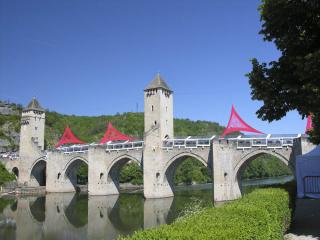 Sur le Pont Valentré, On y déguste, On y déguste...
Sur le Pont Valentré, On y déguste, On y déguste...
Now when you think about it, why would he do that, however much he loved horses? Cahors was a far better trade given the fact that it was a famous banking city, well protected by a horseshoe bend in the Lot from potential invaders, a scenic region with wonderful food and wine. Yes, Richard III was one of the first foodies, and his craving for foie gras and fine malbec was in fact the motivating force that led him to his frustrated outcry on the field of the Battle of Bosworth.
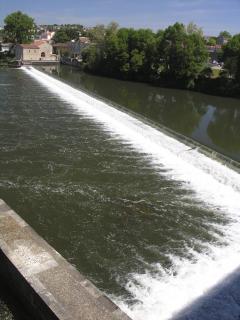 weir and lock
weir and lock
Anyway, it was not to be, and when Cahors subsequently flourished as a major wine region in the 19th century, England was not to be the beneficiary as it had been of Bordeaux – and vice versa. No, Bordeaux through prohibitive taxes on wines upstream of the Garonne, had managed to put a stranglehold on the wines of Cahors and of the South West in general. It’s only very recently then that we’ve seen the effects of a resurgence of confidence and dynamism in the South-West in general and Cahors in particular.
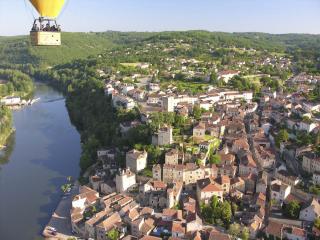 Pont L’Evêque from the air
Pont L’Evêque from the air
Thanks to the success of Argentinian malbec in the US and further afield, Cahors has cleverly used Argentina to piggy-back the marketing and PR of malbec. And why not? The New World has spent the past 30 years exploiting the likes of Bordeaux’ cabernet sauvignon and merlot, and Burgundy’s chardonnay and pinot noir. So why shouldn’t France repay the favour? Why not indeed.
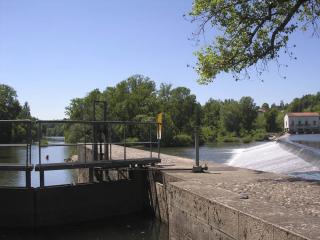 Lock on the Lot
Lock on the Lot
So it was that I found myself in Cahors last month celebrating the so-called Journées Internationales du Malbec. Aimed at highlighting Cahors malbec, this was three days of activities, seminars and visits organised by the cadurciens (as the people of Cahors call themselves for some inexplicable reason) and Jérémy Arnaud of the Union Interprofessional des Vins de Cahors (UIVC). Jérémy, from outside the region, is a charming man who has managed to harness the producers of sleepy Cahors into a positive marketing force.
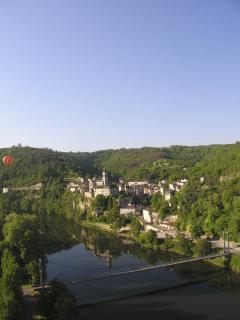 Bridge over the Lot
Bridge over the Lot
If it were all about marketing, it would be as empty as a balloon (more of which soon), but it’s not. Recent progress of Cahors malbec has come about as a result of a real commitment by its producers to overhauling the quality of the wines they’ve been producing, aided and abetted by three excellent vintages (2005, 2007 and 2009) and by the (sometimes but not always enlightened) deployment of outside consultants such as Stéphane Derenoncourt (Château Chambert), Michel Rolland (Château Lagrezette), and latterly Paul Hobbs (Vigouroux), along weih the deus ex machina arrival of terroir specialists Claude and Lydia Bourguignon.
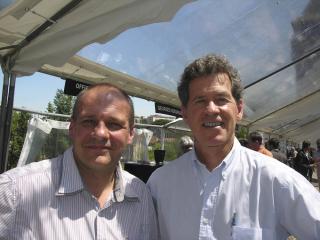 Bertrand-Gabriel Vigouroux with Paul Hobbs
Bertrand-Gabriel Vigouroux with Paul Hobbs
At the conference on the Saturday morning, the most riveting presentation was given by the Bourguignons, who said they were shocked when they arrived at the lack of thought given to density, pruning and rootstocks given the quality of the terroir. ‘We were amazed by the quality of the terroirs when we came here’ said Claude and Lydia. ‘So much so that we looked at the land and decided to start a project here’.
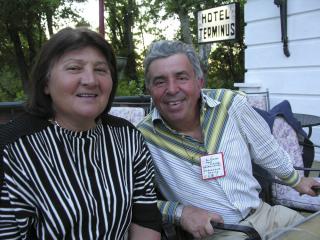 Claude and Lydia Bourguignon
Claude and Lydia Bourguignon
Treating us to a slide show of sci-fi monsters from the soil (earthworms, mites, artheropods and pseudo-scorpions), Claude Bourguignon explained the importance of a living soil to the root systems of the vine. In a region such as Cahors with exposure to the sun from its hillside river terraces and its cracked Kimmeridgian limestone and silica pebbley soils, conditions are perfect, he argued, for great wines. One of his most surprising conclusions was that the soil has great potential for whites and he and Lydia are in the process of researching the best local whites to plant as part of their project.
 Michel Bettane
Michel Bettane
Amid useful contribution from two producers in Argentina, Ricardo Giadorou of Dolium and Paul Hobbs, and a brief conclusion from yours truly (well, the audience had patiently sat there from 9.30 till 1 pm), French critic Michel Bettane presented a tasting of Cahors Malbec. There were some good wines here, most notably the 2007 Le Clos d'Un Jour, the 2007 Chateau de Gaudou Cuvée Reserve Caillau, the 2005 Les Laquets, Cosse Maisonneuve and the 2007 Le Cèdre. For more detail, see my tasting notes at the end.
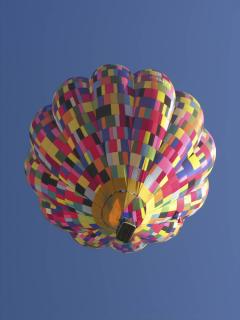 Up, up and away
Up, up and away
The day before, I had given a presentation in beautiful sunshine on a terrace overlooking the Lot to a group of American sommeliers, educators and press. This was principally of Cahors wines that had done well in the World of Fine Wine blind tasting of Cahors-v-Argentinian malbec (World of Fine Wine issue 27, 2010). What had surprised us all about the blind tasting was not so much the quality of the Argentinian malbecs, but the extent to which Cahors malbec had raised its game, with four Cahors wines in the Top 10.
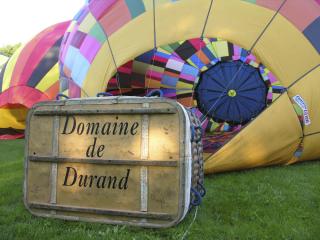 Hot air, cool morning
Hot air, cool morning
All work and no play would have made the three days not dull but one-dimensional, especially since we were blessed with the finest weather the region had seen all year. In bright sunshine, we were taken on a cruise downstream through the Lot River’s working locks with a commentary from the knowledgeable David Cobbold, a British journalist living in Paris. After a splendid gala dinner that evening in the chantry of the cathedral (at which I presented a handful of Argentinian malbecs), it was up at the crack of dawn the following morning for our ascent in a procession of fine balloons (thank you Finkus Bripp for the video).
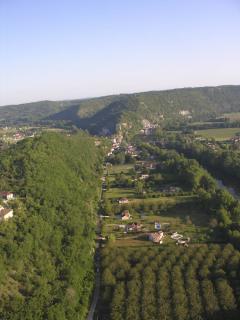 Our ascent
Our ascent
Apart from digging beneath the soil with Claude and Lydia Bourguignon, I can’t think of a better way to see the terroir than by balloon. In an instant, the topography of Cahors manifested itself as a series of loops in the serpentine River Lot, its four terraces and plateau emerging from beautifully wooded countryside dotted with farms, castles and medieval villages. It was almost a shame to have to come back down to earth, but that’s precisely what, after three great days in the Lot Valley, we had to do.
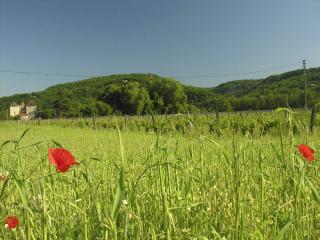 Down to Earth with a Bump
Down to Earth with a Bump
Some favourites from Michel Bettane’s tasting.
2007 Le Cèdre, Château du Cèdre
Lovely nose, beautifully perfumed, intense rich and concentrated fruit, spicy oak, powerful dark red fruits, quite muscular taut six-pack of tannins, very fresh acidity, fine grainy textured tannins, mineral quality, youthful but almost approachable, a wine you feel will be amazing in five years. 95
2005 Les Laquets, Cosse Maisonneuve
Beautifully perfumed red fruits nose, touches of raspberry and cherry, spicy, intense, lovely red fruits, very nice richness and pristine purity with very fine tannins, complexity and finesse, a very well-wrought wine. 94
2007 Le Clos d'Un Jour. Vinification in amphora
Very dense opaque colour, perfumed fresh fruits, a touch violety, lovely black fruits concentration, opulently ripe and fresh, superfine texture, with firm backbone and structure and complexity. A great example of modern Cahors. 93
2007 Château de Gaudou Cuvée Réserve Caillau
Quite oaky on nose, not excessive, big rich, opulent and powerful dark berry fruits, lots of vanilla and smoky oak, stylish, with firm tannic backbone and acidity; quite chunky texture, a wine that needs lots of time, but overall very good intense dark red and black fruits. 91
2007 Château La Reyne, Vent d' Ange
Dense inky colour, fine dark cherryish perfume, nice freshness and purity, good richly concentrated, opulent black cherry fruit with substantial tannins and acidity for structure and yet the texture is fine and very well-crafted, the finish chunky, dry and mineral, so while the wine is still young and a touch austere at this stage, it should develop well. 91
2006 Lamartine Expression.
Mocha oak on the nose, big rich and concentrated dark cherry and mulberry fruits, very good concentration and intensity, quite a lot of oak, finishing quite chunky and dry, but still young and oak should be absorbed in due course. 90
2005 Château Croisille, Cuvée Divin
Nicely perfumed, smoky oak, good opulent cherryish fruit with nice spicy oak and suppleness of tetxure, very good fresh acidity with a mineral dry finish and firm backbone of tannins. 89
2006 Château La Caminade, La Commandery
Mocha / coffee bean oak on the nose, good fruit, quite tight and extracted, nice purity of damsony fruit quality, more integrated oak on the palate, quite firm, quite high acid and dry on the finish, typical Cahors with a touch of austerity, but good. 89
2005 Probus, Clos Triguedina
Attractive red fruits aromas, good red fruits flavours and concentration with some black cherry fruit, good fresh acidity, quite mineral and dry, with firm chunky tannins on the finish; very musclebound, wears a fright wig of tannin, with a question mark over whether degree of extraction excessive or not. 89?
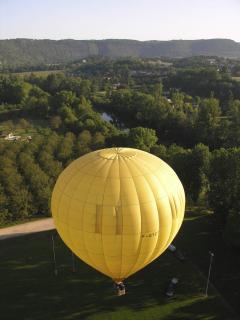 Hello Yellow
Hello Yellow


Comments
Great piece about the Cahors 'Black Wine' - we were at 'Malbec Days' too but then we're lucky enough to live in the Lot!
My wife and I came here originally to run cycling tours and, as we visited many of the vineyards on our routes, we came to learn more about and fall in love with the wonderful Malbec wine - so much so that we now run Cahors wine tours!
The wines are such a great match to the fantastic local food too - duck, lamb, boar, wild mushrooms and truffles, walnuts and great cheeses - you just can't have one without the other!
As one of those American wine educator/writer participants, Anthony, I want to thank you for the comments, the tasting you led, and this excellent reprise of our Cahors Malbec experience. As you said, the Bourguignons were impressive, Bettane as usual somewhat controversial, the cadurciens delightful, the scenery magnificent, and the wines usually lovely and occasionally profound. You captured it well, sir.